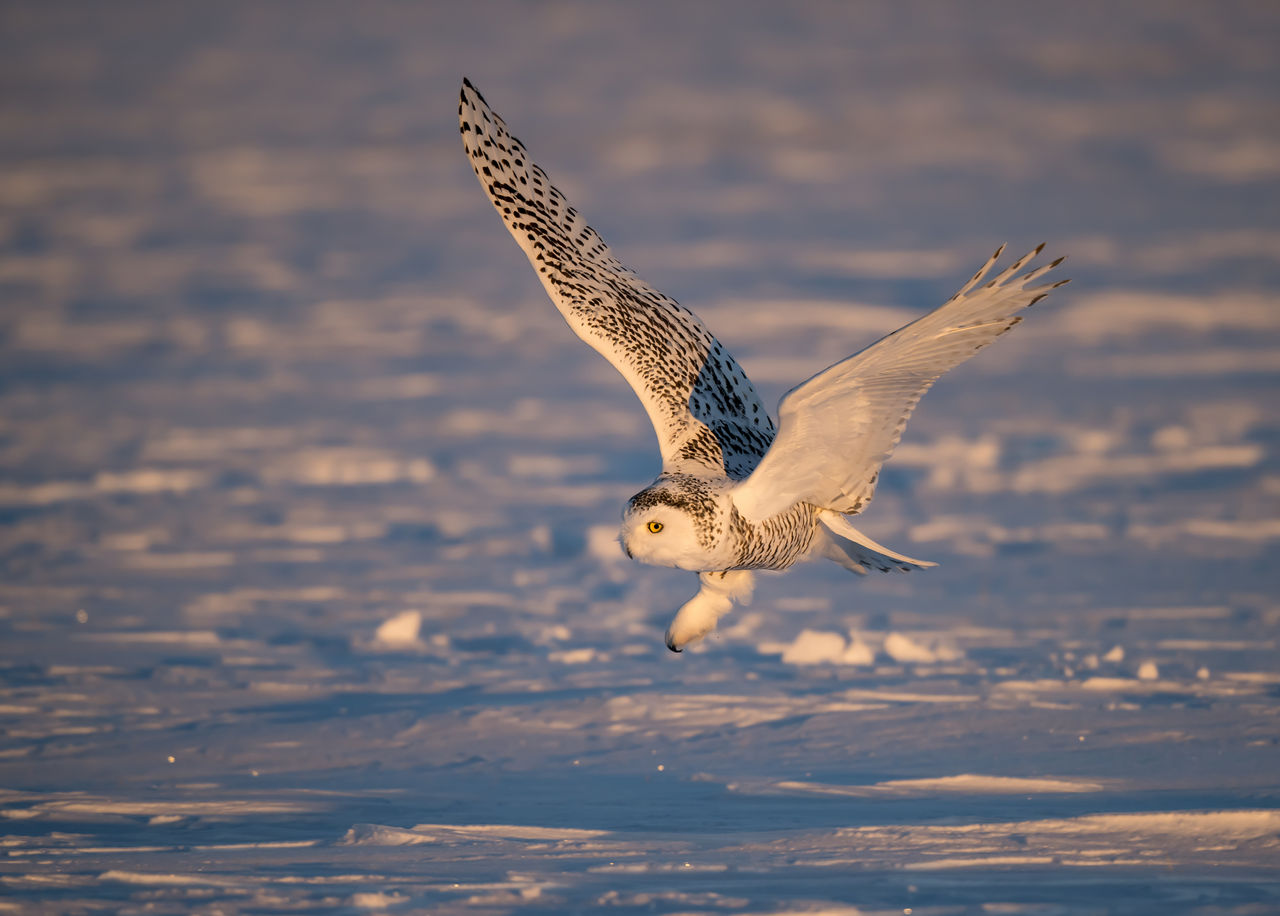Imagine a world hushed by perpetual snow, where a phantom silhouette glides effortlessly across the arctic tundra. This vision embodies the Snowy Owl (Bubo scandiacus), a creature of mesmerizing beauty and resilience. But, could this majestic avian predator, so intrinsically linked to the frigid north, become a casualty of a warming world? Protecting our fauna in their natural habitats is more critical than ever, and the Snowy Owl presents a compelling case study.
I. The Snowy Owl: An Avian Enigma
A. Physical Characteristics and Adaptations
The Snowy Owl is easily distinguished by its striking white plumage, though females and juveniles often exhibit varying degrees of dark barring. This coloration provides impeccable camouflage within their snowy environment. Their dense feathering, extending down to their talons, offers exceptional insulation against sub-zero temperatures. They possess acute hearing, facilitated by asymmetrically placed ear openings, which enables them to pinpoint prey hidden beneath the snowpack.
B. Distribution and Habitat
Primarily inhabiting the Arctic regions of North America, Europe, and Asia, the Snowy Owl favors open tundra landscapes. They demonstrate remarkable adaptability, occasionally venturing south during irruptive years when food resources are scarce in their normal range. This sporadic southward migration can bring them as far south as the southern United States and even Europe.
C. Diet and Hunting Strategies
Lemmings constitute the cornerstone of the Snowy Owl’s diet. Their dependence on these small rodents shapes their breeding success and population dynamics. Beyond lemmings, they opportunistically prey on other small mammals, birds, and fish. Their hunting technique involves both perch-hunting and low-altitude flight, employing their exceptional vision and hearing to locate and capture prey with their powerful talons.
II. Threats to Snowy Owl Populations
A. Climate Change and Habitat Degradation
The Arctic is warming at twice the rate of the global average, leading to significant habitat loss and alteration. The thawing of permafrost, changes in snow cover, and altered vegetation patterns all impact lemming populations, thus indirectly affecting Snowy Owl survival and reproductive success. Coastal erosion, accelerated by rising sea levels, further diminishes crucial breeding habitats.
B. Human Activities and Disturbance
Industrial development, resource extraction, and increased human presence in the Arctic can disrupt nesting sites and reduce available hunting grounds. Collisions with vehicles and power lines pose significant threats, particularly during irruptive events when owls are unfamiliar with altered landscapes. Hunting, although often regulated, can still impact local populations.
C. Predation and Competition
While adult Snowy Owls have few natural predators, eggs and young are vulnerable to predation by arctic foxes, wolves, and jaegers. Competition with other avian predators, such as the Rough-legged Hawk and Gyrfalcon, for limited resources can further constrain population growth.
III. Conservation Efforts and Strategies
A. Habitat Protection and Management
Establishing and maintaining protected areas within critical breeding and wintering grounds is paramount. These reserves should minimize human disturbance and safeguard key lemming habitats. Collaborative efforts between governments, indigenous communities, and conservation organizations are essential for effective habitat management.
B. Research and Monitoring
Long-term monitoring programs are crucial for tracking population trends, assessing the impacts of climate change, and identifying emerging threats. Research focused on understanding Snowy Owl ecology, behavior, and genetics is vital for informing conservation strategies. Sophisticated tracking technologies, such as satellite telemetry, provide valuable insights into their movements and habitat use.
C. Community Engagement and Education
Raising public awareness about the Snowy Owl and the challenges it faces is fundamental to fostering a conservation ethic. Engaging local communities in monitoring and conservation efforts can empower them to become stewards of the species. Educational programs in schools and outreach initiatives can inspire future generations to protect these magnificent birds.
D. Mitigation of Human-Induced Threats
Implementing measures to reduce collisions with vehicles and power lines is crucial. This includes strategic placement of power lines, use of bird-friendly designs, and speed reduction in areas frequented by owls. Responsible ecotourism practices can minimize disturbance to nesting sites and reduce the impact of human activities on their habitat.
IV. The Future of the Snowy Owl: A Call to Action
The Snowy Owl serves as a poignant reminder of the interconnectedness of ecosystems and the far-reaching consequences of environmental change. Its fate is inextricably linked to the health of the Arctic and the actions we take to mitigate climate change and protect biodiversity. A concerted global effort, encompassing habitat preservation, scientific research, community engagement, and responsible environmental stewardship, is imperative to ensure that future generations can witness the ethereal beauty of the Snowy Owl gracing the northern landscapes. The preservation of this iconic species hinges on our collective commitment to safeguarding the wild places they call home.
